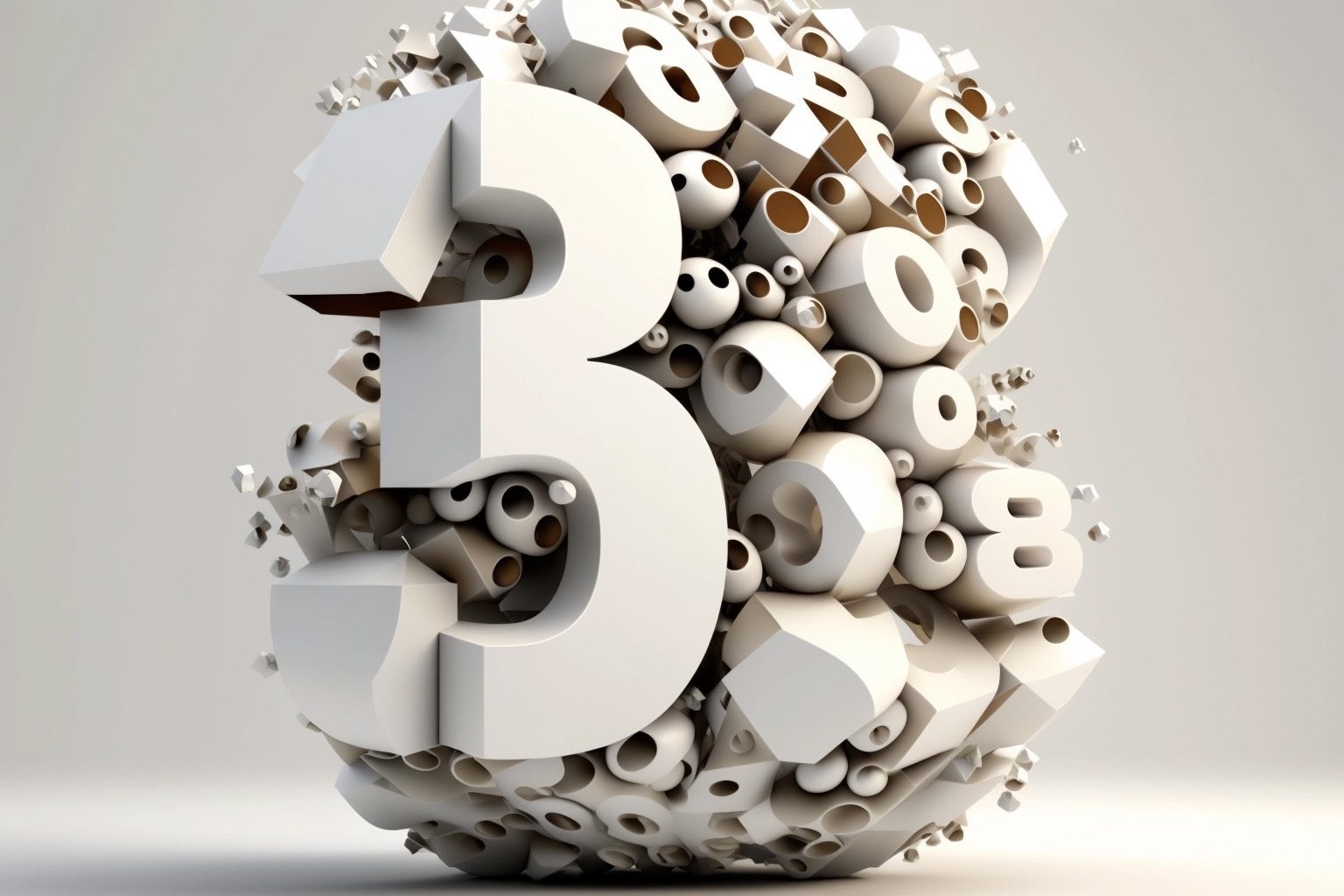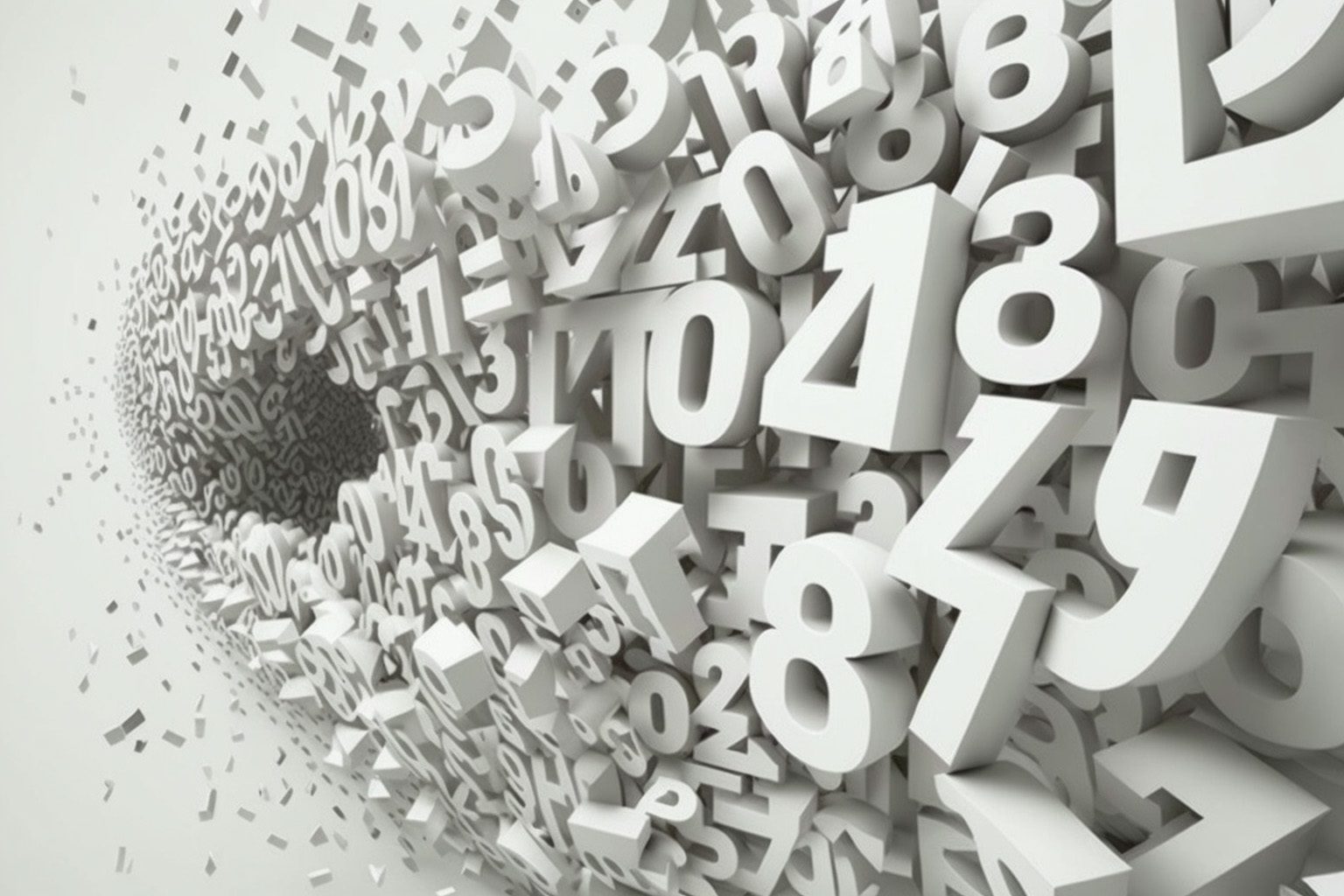Big and small numbers are an important part of our daily life. They appear on various occasions, such as calculating amounts of money, scientific calculations or representing population figures. It is therefore important to understand them in order to be able to use and interpret them correctly.
Chapter in this post:
- 1 What are big numbers?
- 2 Use of large numbers in different contexts
- 3 notation of large numbers
- 4 What are small numbers?
- 5 Use of small numbers in different contexts
- 6 notation of small numbers
- 7 Table with the names of large numbers
- 8 Table with the names of small numbers
- 9 FAQ
- 10 What is a femtosecond?
- 11 What is a Googol?
- 12 What is a micrometer?
- 13 What is a billion?
- 14 What is a nanoliter?
- 15 Similar posts
What are big numbers?
As mentioned earlier, large numbers are those that are very large, often in the millions or billions. They are often used to express large quantities or larger amounts, for example the number of people on earth or a country's gross domestic product.
Use of large numbers in different contexts
Big numbers are used in a variety of contexts, including:
- Economy: Large numbers are often used to express economic indicators such as gross domestic product, gross domestic product per capita, and unemployment.
- Population Statistics: The populations of countries and cities are often expressed as large numbers.
- Science: In science, large numbers are used to express large quantities or distances, for example the number of stars in a galaxy or the distance from a star to Earth.
spelling of large numbers
Large numbers are often represented in short notation using commas to separate thousands, millions, and billions. Example: 10 million can be written as 10.000.000.
What are small numbers?
Small numbers are numbers that are very low, often fractions or decimals. They are often used to express very small quantities or very small proportions.
Use of small numbers in different contexts
Small numbers are used in a variety of contexts, including:
- Math: In mathematics, small numbers are used to express fractions or decimals.
- Science: In science, small numbers are used to express small quantities, such as the thickness of a membrane or the length of a DNA structure.
- Engineering: Engineering uses small numbers to express tiny dimensions or tolerances.
spelling of small numbers
Small numbers are often written as fractions or decimals. Example: 1/2 can be written as 0,5. A number with many decimal places: 123,456 can be written as 1.23456 x 102 to be written.
Table of the names of large numbers
| Written number | e spelling | power | Name (EN) | name | Abkürzung | Prefix |
|---|---|---|---|---|---|---|
| 1 | 1 | 100 | one | one | - | - |
| 10 | 1e + 1 | 101 | ten | th | da | deka |
| 100 | 1e + 2 | 102 | Hundred | hundredweight | h | hecto |
| 1.000 | 1e + 3 | 103 | thousand | thousands | k | kilo |
| 1.000.000 | 1e + 6 | 106 | Million | million | M | mega |
| 1.000.000.000 | 1e + 9 | 109 | billion | billion | G | jig |
| 1.000.000.000.000 | 1e + 12 | 1012 | Billion | quintillion | T | tera |
| 1.000.000.000.000.000 | 1e + 12 | 1015 | quadrillion | quadrillion | P | heel |
| 1.000.000.000.000.000.000 | 1e + 18 | 1018 | trillion | quintillion | E | exa |
| 1.000.000.000.000.000.000.000 | 1e + 21 | 1021 | trillion | sextillion | Z | zetta |
| 1.000.000.000.000.000.000.000.000 | 1e + 24 | 1024 | quadrillion | septillion | Y | yota |
| 1.000.000.000.000. 000.000.000. 000.000 | 1e + 27 | 1027 | quadrillion | octillion | R | purred |
| 1.000.000.000.000. 000.000.000.000. 000.000 | 1e + 30 | 1030 | quintillion | million | Q | that |
| 1.000.000.000.000 . 000.000.000.000. 000.000.000 | 1e + 33 | 1033 | quintillion | decillion | ||
| 10.000.000.000.000. 000.000.000.000.000. 000.000.000.000.000. 000.000.000.000. 000.000.000.000. 000.000.000.000. 000.000.000.000. 000.000.000 | 1e + 100 | 10100 | Googol | googol |
Table of the names of small numbers
| Written number | e spelling | power | Name (EN) | name | Abkürzung | Prefix |
|---|---|---|---|---|---|---|
| 0,1 | 1e-1 | 10-1 | tenth | tenth | d | deci |
| 0,01 | 1e-2 | 10-2 | hundredths | hundredth | c | centi |
| 0,001 | 1e-3 | 10-3 | thousandth | thousandth | m | milli |
| 0,000.001 | 1e-6 | 10-6 | millionth | millionth | μ | mikro |
| 0,000.000.001 | 1e-9 | 10-9 | billionth | billionth | n | dwarf |
| 0,000.000.000.001 | 1e-12 | 10-12 | trillionth | trillionth | p | piko |
| 0,000.000.000.000.001 | 1e-15 | 10-15 | quadrillionth | quadrillionth | femto | f |
| 0,000.000.000.000.000.001 | 1e-18 | 10-18 | trillionth | quintillionth | a | atto |
| 0,000.000.000.000.000.000.001 | 1e-21 | 10-21 | trillionth | sextillionth | z | Zepto |
| 0,000.000.000.000. 000.000.000.001 | 1e-24 | 10-24 | quadrillionth | septillionth | y | yokto |
| 0,000.000.000.000. 000.000.000.000.001 | 1e-27 | 10-27 | quadrillionth | octillionth | r | threshing |
FAQ
What is a femtosecond?
A femtosecond is a very small unit of time, equal to 1/1000000000000 (one trillionth) of a second. In scientific notation it can be represented as 10^-15 seconds.
Femtoseconds are very important in modern physics since many natural processes take place on very short time scales. For example, femtoseconds are used to measure the timing of light and particle beams, to understand chemical reactions, and to study electronic processes in semiconductors.
It is important to note that a femtosecond is very short, and such timescales are difficult to measure precisely. Therefore, it is necessary to use advanced technologies and measurement methods to accurately determine femtosecond times.
What is a googol?
A googol is a very large number defined as 10^100. It is equal to the product of 100 zeros: 10^100 = 1000000000000000000000000000000000000000000000000000000000000000000000000000000000000000000.
The term "googol" was coined by mathematician Edward Kasner in 1910. Although it is a very large number, it is nowhere near as large as some of the largest numbers encountered in mathematics, such as infinity.
Googols are of interest in mathematics and physics because they represent the magnitude of very large numbers. For example, the number of particles in the universe is believed to be around 10^80, which is a much smaller number than a googol.
It is important to note that even googols are still very small compared to some other numbers used in mathematics and physics, such as hyperrealities or transfinite numbers.
What is a micrometer?
A micrometer, also known as a micron, is a unit of length measurement equal to one-thousandth of a millimeter, or 1/1000000 meter. It is often abbreviated to the symbol “µm”.
Micrometers are particularly useful when measuring very small distances, such as in microchip manufacture, semiconductor fabrication, and microscopy. In these areas, dimensions in micrometers are common and it is necessary to provide very high accuracies when measuring lengths and diameters.
It is important to note that microns are a very small unit of length and it is necessary to use advanced technology and measurement methods to accurately measure dimensions in microns. For example, a human hair is typically between 50 and 100 microns thick.
what is a billion
A billion is a very large number defined as 10^9 or 1.000.000.000 - a one followed by nine zeros. In many countries, including Germany and some other European countries, the term "billion" is used, while in other countries, such as the US, the "billion" has the same meaning. It is important to note that there are differences in how these terms are used and it is important to ensure the correct unit is used to avoid confusion.
Billions are often used to describe large numbers related to population, economics, and finance. For example, the number of people in a given country can be measured in billions, or a country's gross domestic product can be measured in billions of dollars or some other currency.
Here are some examples:
- About 8 billion people live on earth (as of 11/2022).
- Turkey's gross domestic product was $2021 billion in 819.
- Life originated on earth about 3,8 billion years ago.
The difference between millions and billions can be illustrated well with this example: while a million seconds are only 11 days, a billion seconds correspond to 32 years.
It is important to note that a billion is a very large number and it can be difficult to understand the meaning of numbers of this magnitude. It can be helpful to imagine how many zeros are in a billion to get an idea of how big it is.
What is a nanoliter?
A nanoliter is one millionth of a liter. A cube with an edge length of one millimeter has a volume of 1000 nanoliters.
Related Articles
Jens has been running the blog since 2012. He acts as Sir Apfelot for his readers and helps them with technical problems. In his spare time he rides electric unicycles, takes photos (preferably with the iPhone, of course), climbs around in the Hessian mountains or hikes with the family. His articles deal with Apple products, news from the world of drones or solutions to current bugs.











